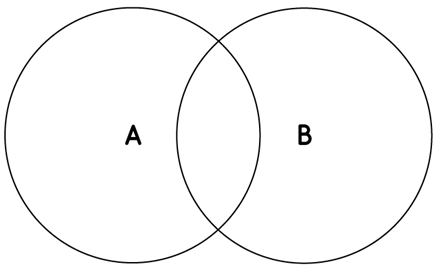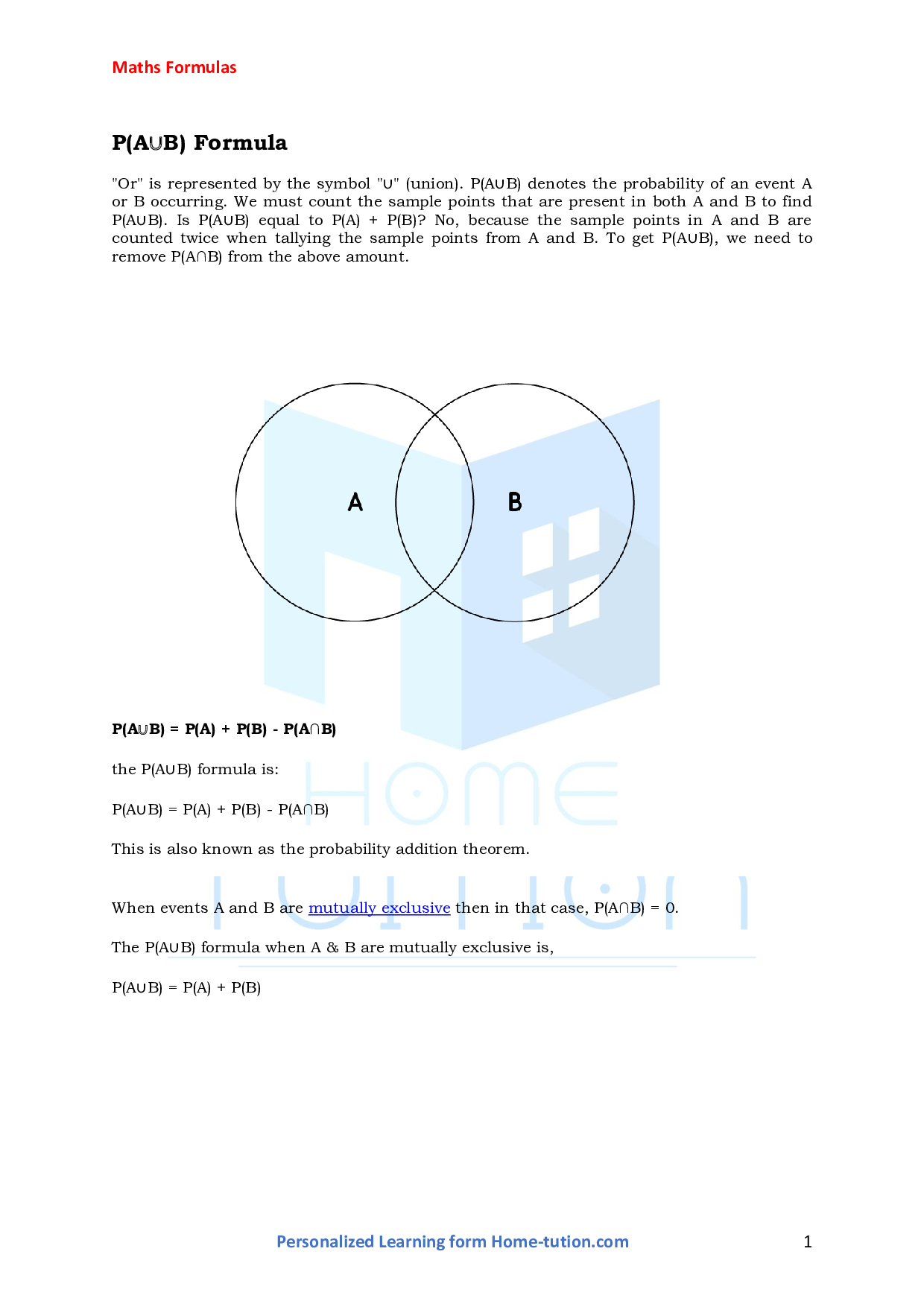Is this page helpful?
P(A∪B)Formula
"Or" is represented by the symbol "∪" (union). P(A∪B) denotes the probability of an event A or B occurring. We must count the sample points that are present in both A and B to find P(A∪B). Is P(A∪B) equal to P(A) + P(B)? No, because the sample points in A and B are counted twice when tallying the sample points from A and B. To get P(A∪B), we need to remove P(A∩B) from the above amount.For more Maths formulas click on the main page.

- P(A∪B) = P(A) + P(B) - P(A∩B)
- the P(A∪B) formula is:
- P(A∪B) = P(A) + P(B) - P(A∩B)
- This is also known as the probability addition theorem.
- When events A and B are mutually exclusive than in that case, P(A∩B) = 0.
- The P(A∪B) formula when A & B are mutually exclusive is,
- P(A∪B) = P(A) + P(B)
Download a free pdf of P(A union B)

